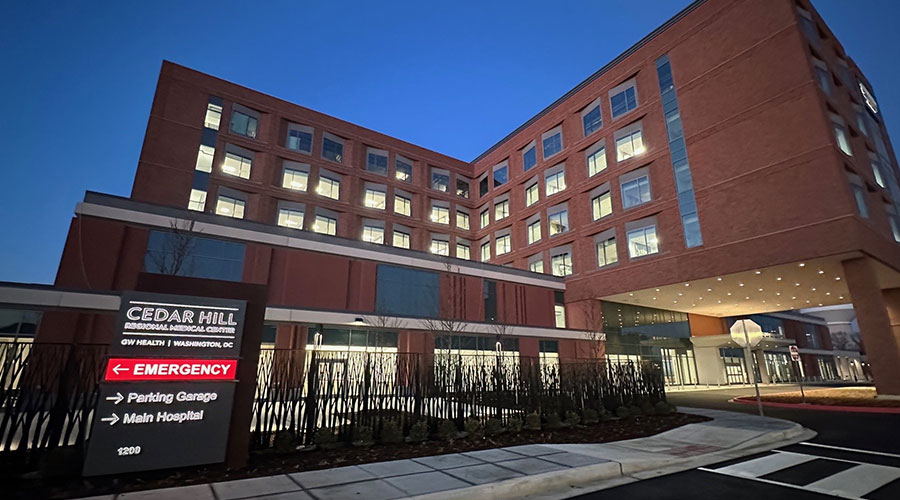A recent Moody’s Investor Service report predicts that the future of the healthcare industry will rely heavily on outpatient care – a shift that supports the evolving standards of care needed in both traditional hospitals and outpatient facilities.
The Moody’s report explains that most medical cases will be cared for as outpatients in ambulatory or micro hospital settings. This trend will eventually lead to hospitals becoming large intensive care units – increasing demand for outpatient services substantially, as it will cater to the larger population of patients with common, lower acuity health issues. In order to create an outpatient care experience that meets this growing demand and improves care quality, it’s imperative that the healthcare industry adopts the appropriate technologies to facilitate the entire process.
Technology has an already well-established presence in the healthcare space, proving itself integral in automating processes that enable better-managed care, improve revenue and better meet patient needs. Healthcare technology is not limited to aiding the day-to-day, meticulous functions of a facility, such as the upkeep of accurate patient and practice data. As the industry becomes increasingly digitized, technology’s capabilities are expanding to provide interoperability with other automated tools and producing actionable data. Insights from this sophisticated network of healthcare technologies, tracking patient history, wait time, visit duration and frequency can lead to better patient care management and a better overall care experience.
At the forefront of healthcare IT innovation are Enterprise-wide Location Services, which e able transformation of processes through the use of location and sensory data. This real-time data can be used to automate clinical workflow, improve resource efficiency and enhance patient care. For one healthcare organization, Oregon Medical Group, the technology helped to achieve the following benchmarks:
• 75 percent reduction in patient wait time prior to being seen by a care provider
• 50 percent reduction in time spent waiting in the exam room for the physician
• 60 percent reduction in the number of steps taken by medical assistant daily
• 50 percent increase in time spent with a medical assistant.
The OMG story
In 2018, Oregon Medical Group (OMG) began preparations for the opening of its newest facility – a 46,000 square foot multi-specialty outpatient clinic in Eugene, Oregon. The new location had a layout unique to the organization’s 16 existing clinics in the region, and required patients to check in for all appointments at a centralized registration area on the first floor. Staff would then need to notify care providers of patient arrival, manually retrieve patients from the waiting area and move them to the exam room, while informing the patient if waits were expected.
For patients with consecutive visits, multiple departments within the facility needed to know the status and location of each patient in order to properly manage resources. Moreover, the floor plan of the new building did not allow for complete visibility from clinical workstations to each exam room, making the traditional medical flag system used in most of OMG’s clinics obsolete.
The tech solution
Oregon Medical Group partnered with CenTrak to implement RTLS technology that provided patient and staff locating technology using an extension to their existing RTLS software used for asset tracking.
RTLS provided OMG’s personnel with real-time, actionable data on the whereabouts of physicians, staff, patients and assets. This data made it possible for clinical teams to identify process bottlenecks and make informed decisions to tailor processes to improve care quality and overall patient experience.
The system, which integrated location data with the OMG EHR system, was the core strategy to facilitate clinical workflow and resource allocation to lessen patient wait times and maximize time spent with a care provider.
The outcome
Utilizing RTLS technologies allows staff and physicians to manage patient flow by visualizing their visit locations and durations, monitoring the status and lengths of appointments to anticipate patient flow bottlenecks and reallocate space to accommodate patient capacity.
The level of visibility provided by OMG’s RTLS solution has allowed them to transition to a patient self-rooming model, in which patients head directly to the exam room after registering at the front desk – making the traditional waiting room obsolete. When patients head to the exam room, clinicians are alerted in real-time that the patient is waiting to be seen.
This empowers healthcare staff to make proactive decisions about patient experience on an individual level. For OMG in particular, real-time insights were delivered that reported upon which patients were registered, which were waiting, and which needed to be seen next. A live patient list feature was incorporated, which gave nurses the ability to track patients with extended wait times and notify them of any impact on appointment time. In short, it has delivered a more enjoyable, care-centric experience for patients, and streamlined operations for physicians.
Oregon Medical Group’s RTLS implementation is proof that, through use of the latest technologies, better-informed patient decisions and solutions to process bottlenecks are all possible, paving the way for a future of better patient experiences.
Ari B. Naim, PhD (Drexel University: BS, Chemical Engineering, CoE, 1987; MS, Electrical Engineering, CoE, 1989; PhD, Electrical Engineering, CoE, 1992), serves as President and CEO of CenTrak, a provider of Real-Time Location Systems (RTLS) for the healthcare industry.

 Design Plays a Role in the Future of Healthcare
Design Plays a Role in the Future of Healthcare Cedar Hill Regional Medical Center GW Health Officially Opens
Cedar Hill Regional Medical Center GW Health Officially Opens Designing Healthcare Facilities for Pediatric and Geriatric Populations
Designing Healthcare Facilities for Pediatric and Geriatric Populations Kaiser Permanente Announces New Hospital Tower at Sunnyside Medical Center
Kaiser Permanente Announces New Hospital Tower at Sunnyside Medical Center Building Disaster Resilience Through Collaboration
Building Disaster Resilience Through Collaboration